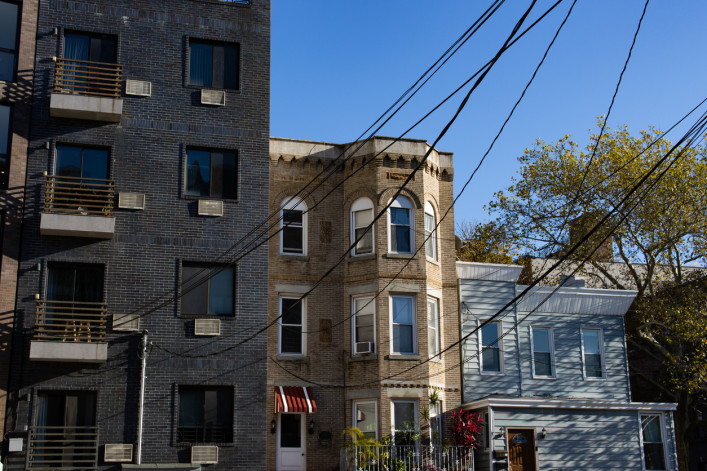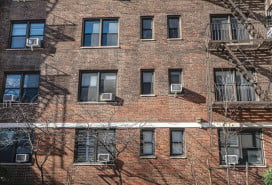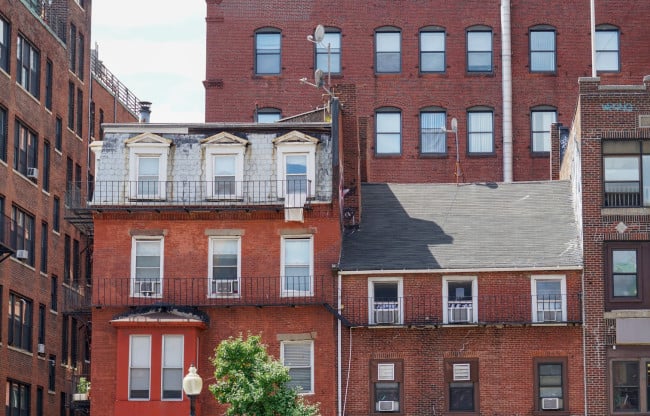My apartment building doesn't have a C of O. Do I have to pay rent?
- A landlord can't collect rent if the building lacks a required certificate of occupancy
- If you stop paying rent, you may find yourself in housing court when your lease ends
- Pre-1938 buildings don't need a C of O unless they've been undergone a major alteration

Buildings constructed before 1938 are not legally required to have a C of O, unless they have undergone a major alteration at some point.
iStock
My rental apartment building doesn't have a certificate of occupancy. Do I have to pay rent?
You don’t have to pay rent if you can prove there’s no certificate of occupancy (C of O) when there should be or if there's a C of O violation, our experts say. The C of O identifies how a building can be used and a landlord cannot collect rent in a building without one.
"Tenants who discover this issue may withhold rent and won't owe any rent going forward," says Jennifer Rozen, managing attorney at Rozen Law Group. Unfortunately you can't recover rent you've already paid if there isn't a proper C of O, she adds.
However, if you stop paying rent because you find out there’s no C of O, you do risk losing your apartment. When your lease expires—or if you are a month to month tenant—your landlord will typically sue to evict you. “You just don’t have to pay rent during that time,” says Justin C. Brasch, founding partner of the Law Offices of Justin C. Brasch.
Your landlord may sue to get the apartment back
If you stop paying rent in a building that does not have a C of O, you will typically find yourself in housing court. You cannot be sued for non-payment of rent because, if you've done your homework correctly, you will have a defense.
“If there’s no C of O, you should be able to show that to the court and get it dismissed,” Brasch says.
You can look up your building's C of O through the city's Building Information System.
Instead, you will likely be sued in a holdover case where the landlord seeks not payment, but possession of the apartment. So at the end of your lease term, or after the required notice period if you are a month-to-month tenant, you will be sued for being in possession of the apartment beyond the lease term.
Brasch says tenants in these situations often end up in a settlement with the landlord. “Usually a landlord’s attorney would try to make a deal with you to leave on a particular date and waive your rent—because they can’t collect rent,” he says.
In the case where your apartment is rent stabilized you have additional protections, which includes the automatic right to renewal. Rozen says the landlord will eventually get possession of the unit "as long as there's no lease in effect and the unit is not rent stabilized."
Some buildings are C of O exempt
It’s worth noting, buildings constructed before 1938 are not legally required to have a C of O, unless they have undergone a major alteration at some point, changing the occupancy, use, or the building’s main entrances or exits.
“Since there is no requirement for unaltered pre-1938 buildings to have a certificate of occupancy, lacking the document would not result in enforcement actions and related penalties from DOB,” says Andrew Rudansky, press secretary at the Department of Buildings.
However, if a pre-1938 building did undergo a major alteration after 1938, the landlord would be legally required to obtain a C of O indicating the new use and occupancy of the building.
If you’re living in the altered space in a building without the required certificate of occupancy, the standard penalty issued to your landlord for this type of violation is $2,500.
Fixing C of O issues
One of the most common scenarios where a C of O is missing is in a townhouse that’s been upgraded to create additional living space: A two-family turned into a three-family would typically need a new C of O, but you may find owners who neglected this step.
A temporary certificate of occupancy or TCO, may be issued if the building is safe to inhabit but still has some outstanding work to do or permits to obtain before a C of O is granted. In some cases the TCO expires before the correct C of O is issued.
The timeframe for your landlord to get the C of O to match the property will depend on the extent of the work done, whether it is up to code, and whether the zoning for the property allows the change in the first place. “In New York it can take a very long time to fix the C of O,” Brasch says.
You Might Also Like




























